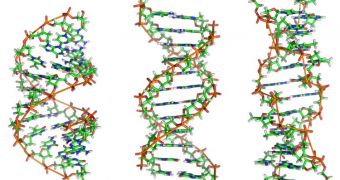A group of British researchers recently carried out a study in which they emulated the processes through which DNA material inside living cells is damaged. They learned that the thickness of the membrane separating the cells from their environment plays a critical role in the process.
The work was carried out with the aid of nanoparticles, which have lately been used widely in medical research. The team set up an experiment in which human placental BeWo cells were grown in culture for four to seven days.
The cells cultured for only four days produced a single-layer membrane, similar to the one in the placental barrier separating mother from fetus. The ones that were grown for seven days produced a bilayer membrane of the same type.
These membranes were then introduced in cell cultures, covering and protecting a different type of cell from the world outside. On top of them, researchers poured nanoparticles, and then watched to see how the latter influenced the cells underneath the protective membrane.
This setup was meant to be a proxy for determining whether exposure to nanoparticles carries any risk for humans in general, and expecting women, specifically. The BeWo cells were meant to replicate the protective placental barrier in the womb.
Investigators at the University of Bristol determined that DNA-damaging signaling molecules were only sent through the barrier if the defensive structures had more than one layer. Details of the research were published in the latest issue of the top scientific journal Nature Nanotechnology.
In the experiments, the team observed that no harmful signaling molecules were sent through the monolayer BeWo cell barrier. The bilayer and multilayer membranes were all pierced, the group says.
“If the importance of barrier thickness in signaling is a general feature for all types of barriers, our results may offer a principle with which to limit the adverse effects of nanoparticle exposure and offer new therapeutic approaches,” Dr. Patrick Case explains.
The expert, who was the senior author of the new study, holds an appointment as a consultant senior lecturer in orthopedic surgery and pathology at the UB School of Clinical Sciences. The study was funded by the Wellcome Trust and the Medical Research Council.

 14 DAY TRIAL //
14 DAY TRIAL //